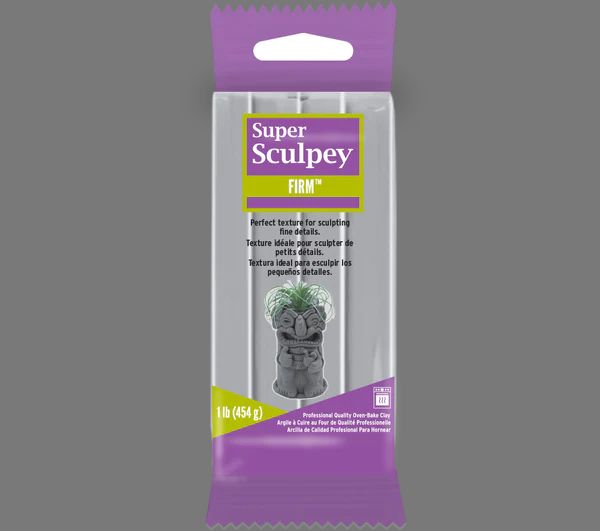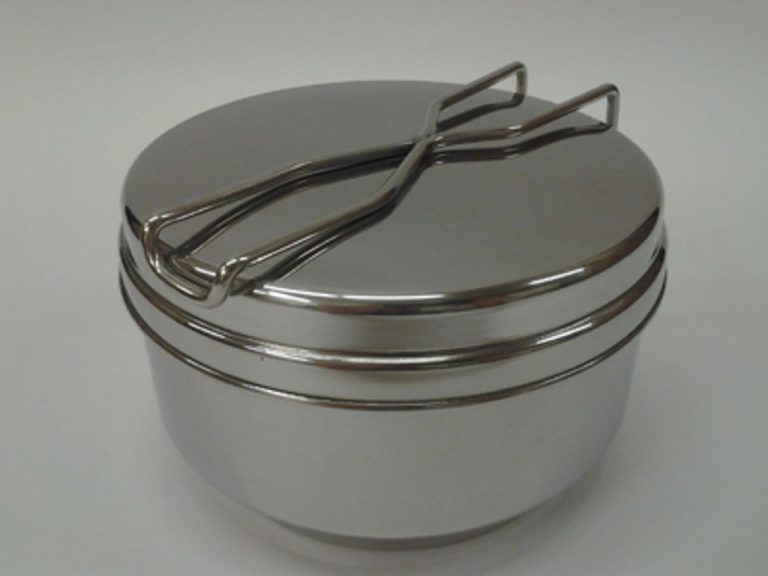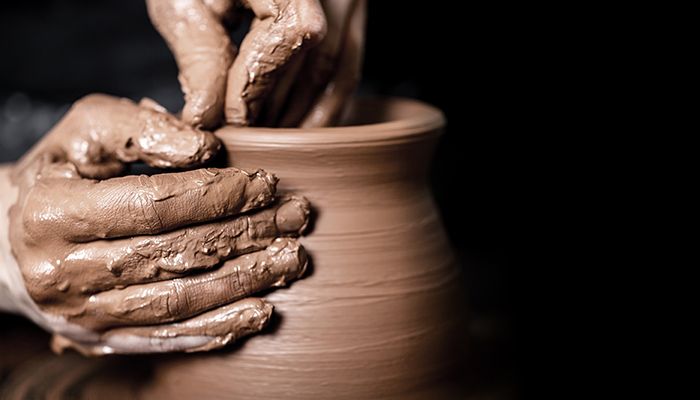What Is The Clay Called That You Put In The Oven?
What is Oven-Baked Modeling Clay?
Oven-baked modeling clay, also known as polymer clay, is a type of molding clay that hardens when baked in a regular home oven. The main ingredients in oven-baked modeling clay are PVC resin, fillers, and coloring pigments. These ingredients are mixed together and molded into a soft, pliable material that retains its shape at room temperature. Unlike air-dry clay, oven-baked modeling clay does not dry out and harden through evaporation. Instead, it requires heat from an oven to undergo a chemical reaction that cures and hardens the clay.[1]
The key difference between oven-baked clay and air-dry clay is that air-dry clay dries and hardens at room temperature through evaporation, while oven-baked clay requires baking in an oven to cure and harden. Air-dry clay contains cement, plaster, or flour mixed with water. As the water evaporates over several hours or days, the clay hardens. Oven-baked polymer clay maintains its elasticity and does not dry out until baked at 275°F for 15 minutes per 1⁄4 inch thickness.[2] Oven baking results in a hard, durable plastic material. The curing process also makes the colors more vibrant.
[1] https://www.sculpey.com/about-us/our-products
[2] https://www.clay-it-now.com/whatclaytobuy.html
Types of Oven-Baked Modeling Clays
There are a few main types of modeling clay that are designed to be baked in the oven to harden them:
Polymer Clay
Polymer clay is the most popular type of oven-bake modeling clay. Brands like Sculpey and Fimo are made from polyvinyl chloride (PVC) polymers that remain flexible at room temperature but harden when baked at relatively low temperatures around 130°C. Polymer clays come in a wide variety of colors and can be blended and sculpted in very fine detail. They are an excellent choice for modeling, miniature, and doll making projects.
Self-Hardening Clay
Some clays are formulated to harden over time through air exposure rather than baking. However, baking self-hardening clays makes them cure faster and harder. These clays contain sulphur, which reacts with oxygen to cause hardening. Self-hardening clays can be used similarly to polymer clays but have some differences in workability and finished results.
Pottery/Ceramic Modeling Clay
Pottery clays like stoneware or earthenware clays can also be used for modeling and oven-baking. These clays require much higher firing temperatures, around 1000°C – 1300°C. When fired at the right temperatures, pottery clays form durable ceramic pieces. However, they tend to be trickier to work with for modeling detailed objects.
Uses and Applications
Oven-baked modeling clay like Sculpey and Fimo has many uses and applications. Some of the most common uses include:
Jewelry and beads: One of the most popular uses for oven-baked modeling clay is to create jewelry pieces like pendants, beads, rings, and earrings. The clay can be shaped, textured, and colored before baking into durable jewelry components. Sources: https://blog.treasurie.com/what-is-polymer-clay/, https://www.youtube.com/playlist?list=PLkObjF42ma9Vaq-1UAYbKUz1NFr2cCbPA
Figurines: Modeling clay is commonly used to hand sculpt miniature figurines, dolls, and decorative items. The clay can hold fine detail for facial expressions, clothing, accessories, and textures. Sources: https://blog.treasurie.com/what-is-polymer-clay/, https://www.youtube.com/playlist?list=PLkObjF42ma9Vaq-1UAYbKUz1NFr2cCbPA
Household décor: Oven-bake clay can be molded into bowls, vases, coasters, buttons, knobs, and other decorative household items. The lightweight clay makes crafting décor easy. Sources: https://blog.treasurie.com/what-is-polymer-clay/, https://www.youtube.com/playlist?list=PLkObjF42ma9Vaq-1UAYbKUz1NFr2cCbPA
Benefits and Advantages

Oven-baked modeling clay offers a number of benefits and advantages over other modeling materials, which makes it a highly versatile option for artists, sculptors, hobbyists, and crafters. Some of the main benefits include:
– Very malleable and easy to sculpt detail: Oven-baked modeling clay is very soft and pliable, even more so than regular clay. This allows for intricate sculpting and an ability to capture fine details in a model or sculpture. The hands-on nature provides a very tactile experience when shaping the clay. (source)
– Takes fine detail well: Related to being highly malleable, oven-baked modeling clay holds the finest details of a sculptor’s work. Intricate patterns, textures, and designs can be imprinted and will hold their shape when the clay is cured. This makes it good for detailed ornamentation. (source)
– Vibrant colors available: Oven-baked modeling clay comes in a wide range of colors allowing for colorful and vivid designs. Mixing colors together can create custom palettes as well. The colors remain vibrant even after curing. (source)
– Once cured, items are durable: After following the baking instructions, oven-baked modeling clay will cure into a hard, durable finish. Pieces will not deform or degrade easily over time. The cured clay is also lightweight and relatively strong. (source)
How to Use
One of the keys to successfully working with oven-bake modeling clay is properly conditioning and preparing it. When you first open a new package, the clay will be quite stiff. To make it malleable, knead it vigorously with your hands for several minutes until it softens. You may need to briefly microwave it for 10-20 seconds as well. The clay should then feel smooth, flexible and easy to shape.
There are endless sculpting techniques you can use with oven-bake clay. For detailed items, roll the clay into a log or ball and use clay sculpting tools to carve fine details. For flat items like tiles or plates, roll out a slab using an acrylic roller. Cut custom shapes with cookie cutters or a craft knife. You can further texture the clay by pressing in molds, stamps or stencils.
Follow the baking instructions on the clay package, as times and temperatures vary. Most clays bake at 265-275°F for 10-15 minutes per 1/4 inch thickness. Baking cures the clay fully into a hard, durable finish. Let the pieces cool completely before handling. If desired, sand any rough areas with fine grit sandpaper and finish with a sealant like polyurethane for added shine and protection.
Projects and Tutorials
Oven-baked modeling clay is extremely versatile and can be used to create a wide variety of crafts and projects. Some of the most popular projects include:
Jewelry Pendants
Oven-baked modeling clay is ideal for making jewelry pendants in any shape imaginable. The clay can be molded, sculpted, and textured before baking to create unique jewelry pieces. Simple pendants like hearts, stars, and initials are easy beginner projects. More advanced crafters can create intricate pendants with fine details.
Mini Figurines
Modeling clay is perfect for crafting miniature figurines of people, animals, and more. Sculpt characters, creatures, and anything else you can imagine in small scale. These mini figurines make great gifts, collectibles, cake toppers, and more when baked.
Decorative Boxes
Transform simple cardboard boxes into works of art by covering them with oven-baked modeling clay designs. Make patterned boxes, animal boxes, holiday-themed boxes, and more. These decorative clay boxes can hold small trinkets or be used for display.
Magnets
Turn your clay creations into custom refrigerator magnets. Sculpt shapes, letters, and figures and embed a magnet on the back before baking. Kids enjoy making magnets as an easy clay project. These handmade clay magnets also make thoughtful gifts.
Tips and Tricks
When working with oven-baked modeling clay, keep these tips in mind for the best results:
Avoid overmixing colors. Too much kneading and mixing can cause colors to become muddy. Gently fold and blend colors instead of vigorously kneading. See more tips on mixing colors at 10 Simple Polymer Clay Tips.
Let cool completely before handling after baking. Let clay sit for at least 30 minutes after baking before handling to prevent fingerprints and indentations. Refer to 20 Polymer Clay Tips for recommended cooling times.
Work on a smooth, nonstick surface. Glass, marble, ceramic tile, and acrylic sheets make good work surfaces that won’t stick to the clay.
Keep clay sealed in an airtight container or bag when not in use. This prevents clay from drying out and becoming brittle.
Common Problems
Oven-baked modeling clays like Sculpey can run into some common issues during baking and curing. Here are some of the main problems and potential solutions:
Clay cracking during baking is a frustrating issue. This can happen if the clay is too thin or if there is a flaw or air bubble in the clay. Thicker sections are less prone to cracking. Kneading the clay thoroughly can help minimize air bubbles. Adding liquid clay or a clay softener can make the Sculpey more flexible to prevent cracking as well [1].
If the clay doesn’t properly cure, it will remain sticky or soft after baking. This is usually from underbaking the clay. Carefully follow the baking instructions, checking frequently near the end. Baking for the maximum recommended time is ideal. You can also try a longer preheat to fully heat the oven [2].
A brittle finished piece can happen when the clay is overbaked. Follow the baking instructions precisely, erring on the side of less time. Also avoid very high oven temperatures. Adding liquid clay or clay softeners can help produce a less brittle product as well [1].
Safety Considerations
When working with oven-baked modeling clay, there are some safety precautions to keep in mind:
Proper ventilation is important when baking polymer clay. Opening windows, using a fan, or baking in a well-ventilated area can help clear any fumes. According to the Missouri Poison Center, breathing in fumes is only a concern if baking a very large volume of polymer clay in an unventilated space https://missouripoisoncenter.org/is-this-a-poison/polymer-clay/.
Some individuals may experience skin irritation or allergic reactions from contact with unfinished polymer clay. Wearing gloves while sculpting can prevent skin contact for those with sensitivities. It’s also important to avoid contact with eyes and mouth https://www.sculpey.com/blogs/blog/10-surprising-facts-about-polymer-clay.
Oven-baked modeling clay is not intended for food use or food preparation. It’s important not to bake polymer clay in the same oven used for food. Once cured, polymer clay is non-toxic but should not come into contact with food https://missouripoisoncenter.org/is-this-a-poison/polymer-clay/.
Conclusion
Oven-baked modeling clay, also known as polymer clay, is a versatile, easy to use and affordable modeling material. It comes in a variety of colors, can be blended and shaped by hand, and hardens into a durable finish when baked in a regular oven. Both children and adults enjoy working with polymer clay to make jewelry, figurines, miniature food items and more.
To get started with oven-baked modeling clay, begin by choosing a brand and buying an assortment of colors. Sculpey and Fimo are popular brands with many color options. You’ll also need some basic sculpting and shaping tools, as well as accessories like liquid polymer clay for bonding pieces together. Start with simple projects like beads, buttons or charms. As you get comfortable handling the clay, try making miniature food items, animals or more detailed sculptures. Use acrylic paints to add details and finishes. With practice and creativity, oven-baked modeling clay allows you to make almost anything you can imagine!



